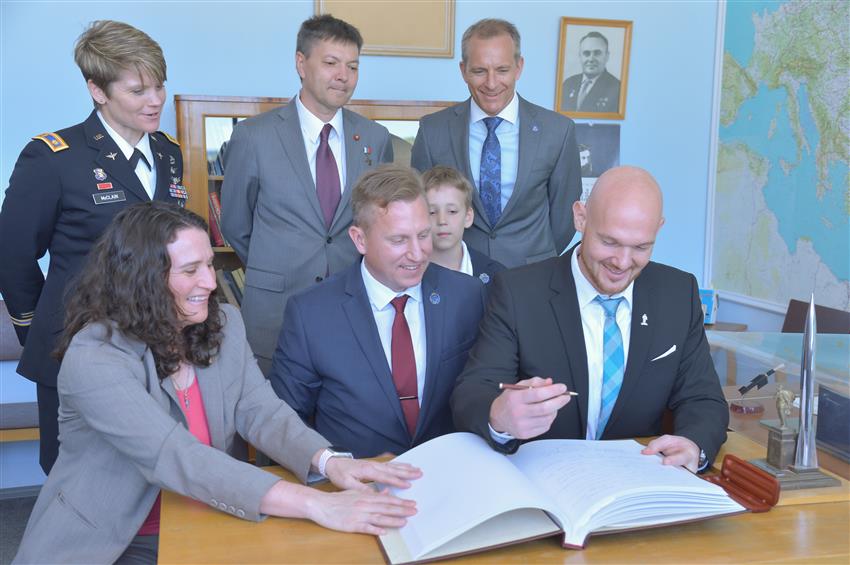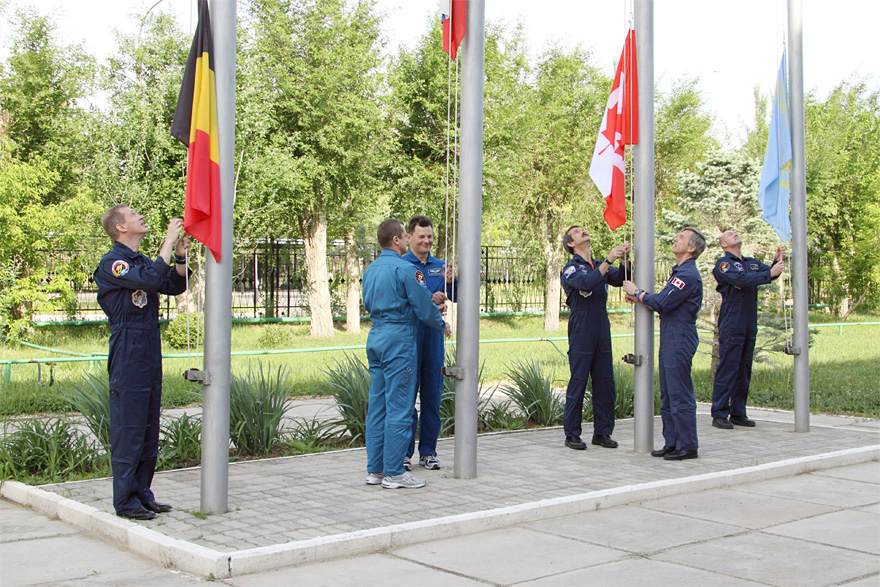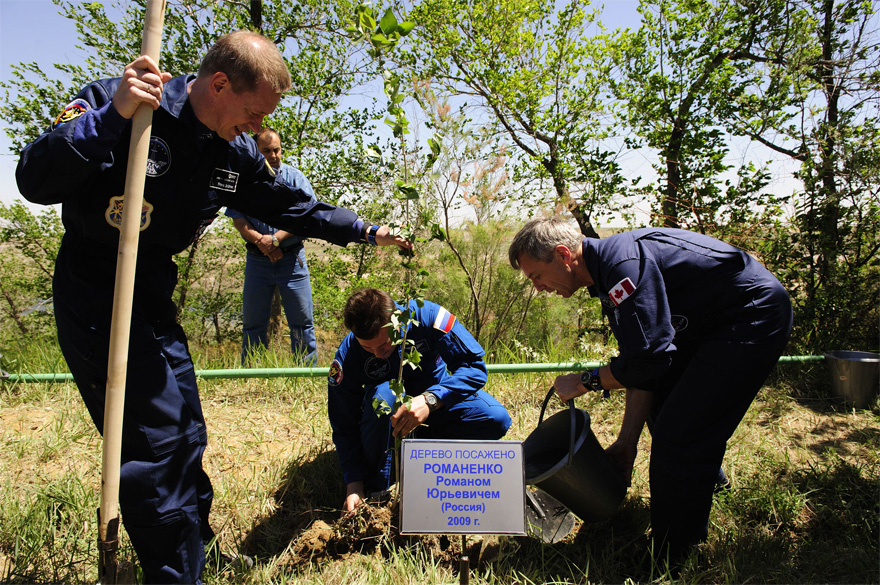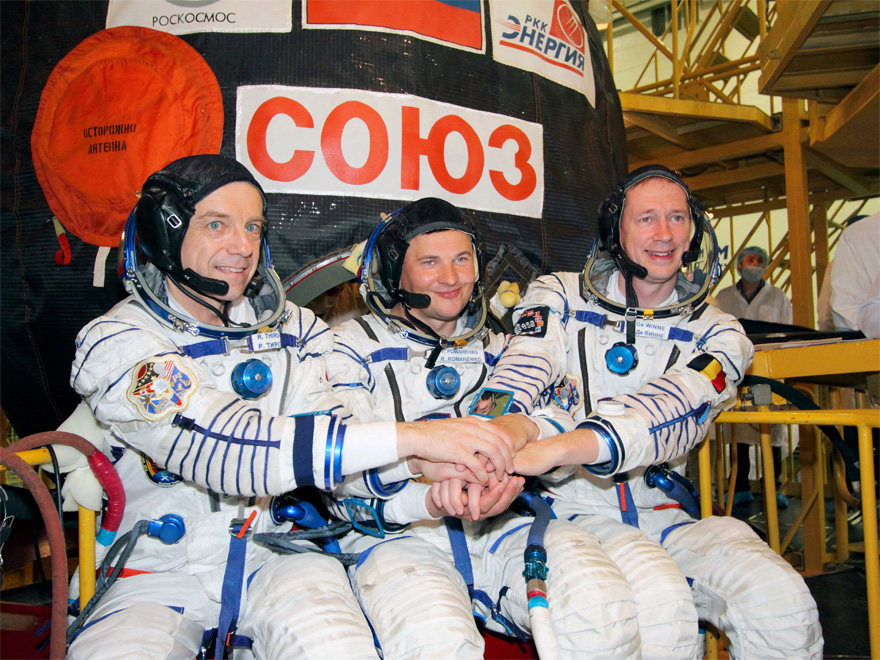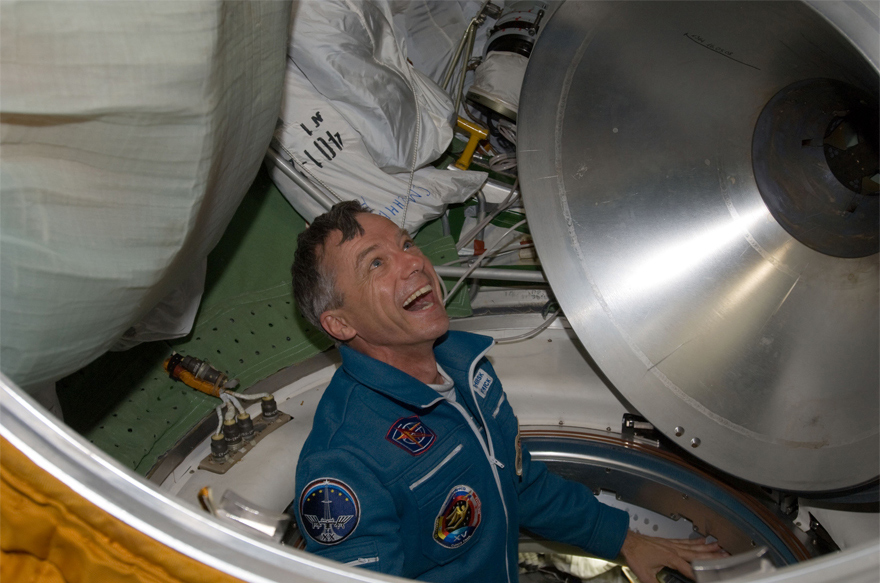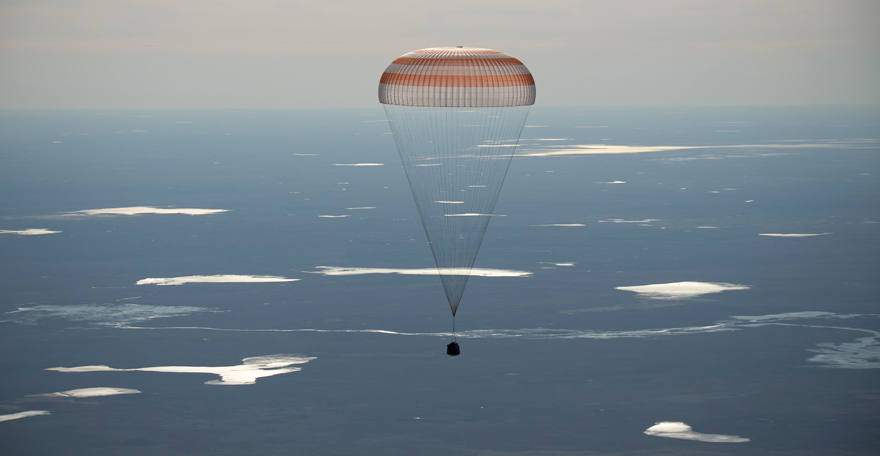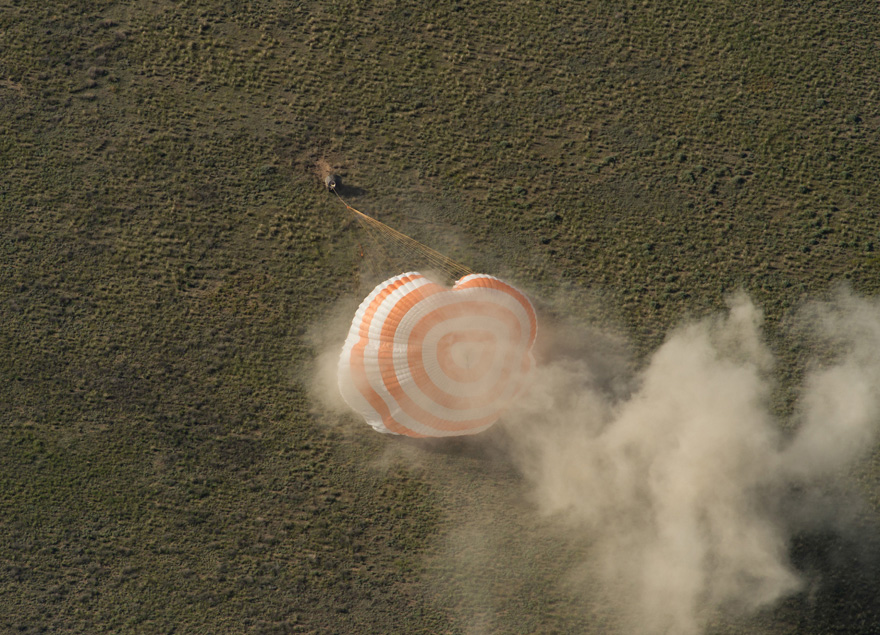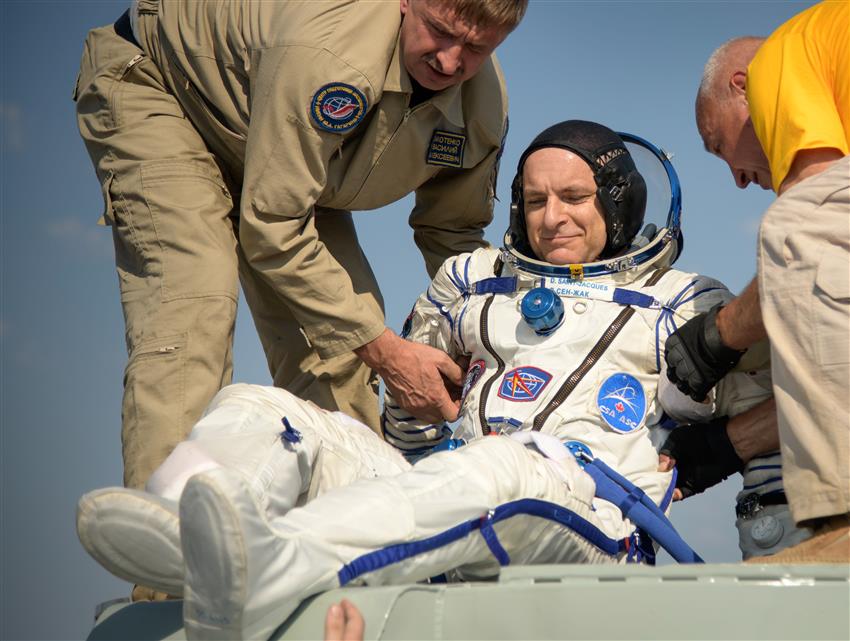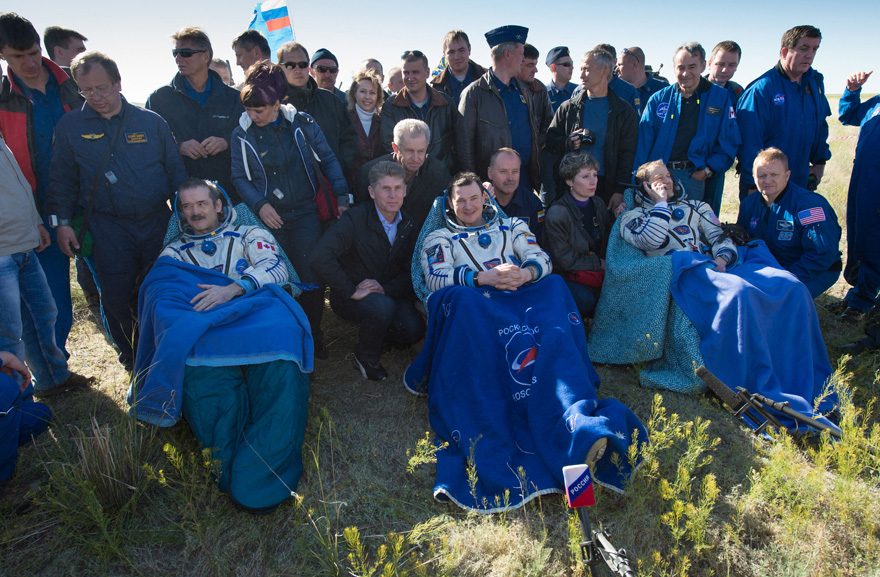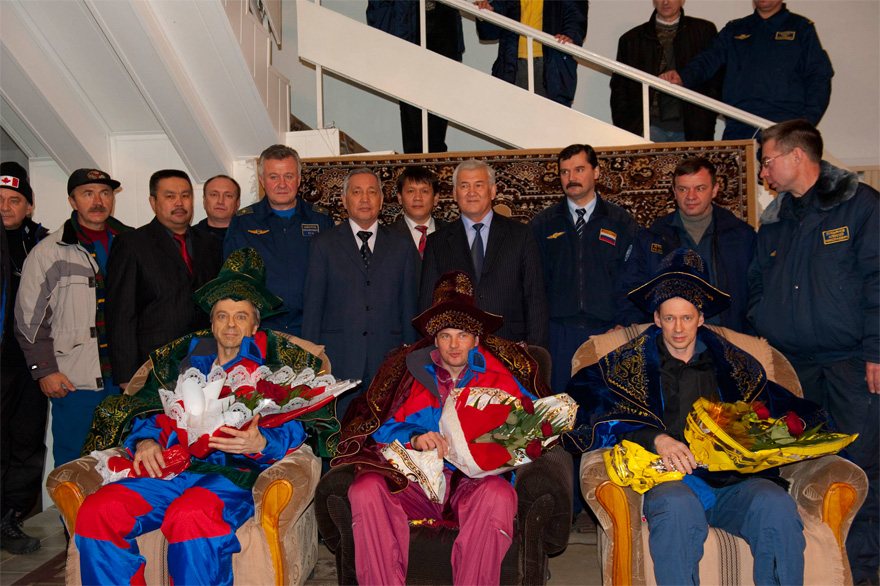Journey of the Soyuz, from lift-off to landing
Since , astronauts have been strapped into the Soyuz vehicle and shot into space under the tremendous thrust from the combustion of hundreds of tonnes of liquid oxygen and kerosene fuel.
The Soyuz is currently the only vehicle that can fly humans between Earth and the International Space Station (ISS). Read about the steps of the astronauts' round trip on the spacecraft.
Preparation for launch
Exams
Launch preparation begins a few weeks before the scheduled lift-off. The astronauts must first pass a series of exams, including comprehensive qualification exams. They then participate in a press conference at the Yuri Gagarin Cosmonaut Training Center in Moscow.
Russian ceremonies
In Russia, the space program includes an important cultural component. Some of the country's rituals and traditions are incorporated into the activities and followed by all the astronauts, whether or not they are Russian. These take place in Moscow and Baikonur. Examples include:
Departure for the Baikonur Cosmodrome in Kazakhstan
About two weeks before launch, the astronauts travel to Baikonur where they are quarantined. During their stay, they continue their preparation, including submitting their Sokol suits to pressurization tests.
Launch
Taking the Soyuz rocket to the launch pad
The Soyuz rocket is transported from the hangar to the launch pad approximately 48 hours before the launch.
Tradition forbids the crew from seeing the rocket during this part of the trip. Backup crewmembers, dignitaries and the astronauts' families, however, do witness this important step.
Meeting of the State Commission
The prime and backup crews take part in a meeting where members of the State Commission approve the launch of the Soyuz so that the mission can be achieved.

Expedition 55 prime crew and backup crew participate in the State Commission meeting to approve the Soyuz launch. (Credit: NASA)
Press conference
On the eve of the launch, the prime and backup crew astronauts attend a press conference where they answer questions from the media and discuss space travel with dignitaries.

Canadian astronaut Chris Hadfield and his Expedition 34 crewmembers take part in the crew press conference one day before the launch. (Credit: NASA)
Launch day
On launch day, the astronauts:
- are blessed by an Orthodox priest;
- put on their suit;
- pressurize their suit and perform a final test;
- say goodbye to their family and loved ones;
- board the bus that will take them to the launch pad;
- climb a staircase that leads them to the entrance of the Soyuz rocket;
- enter the Soyuz via the Orbital Module about two and a half hours before the launch.
Once aboard the Soyuz, they perform final tasks and checks prior to the launch:
- check for airtightness and proper functioning of all components
- verify that suits have no leaks
- activate lift-off systems
Propelled at speeds of 25,000 km/h, the astronauts find themselves in microgravity less than 10 minutes after lift-off!
En route to the International Space Station
The duration of the trip to the ISS varies. Until , astronauts always spent about two days in the Soyuz spacecraft before docking to the ISS.
Since then, some rendezvous have taken place only six hours after lift-off, after the Soyuz has circled Earth four times! During that time, the astronauts begin to acclimatize to microgravity while they monitor the spacecraft's systems.
Docking to the ISS
The ground crew sends commands to the onboard computer to put the Soyuz on the right trajectory to rendezvous with the ISS. If everything goes well, the Soyuz automatically docks itself.
However, if the radar fails, the astronauts must use the optical sighting device to dock manually. This is when the countless hours spent in the simulator really come in handy!
Once mated, the air pressure on board the Soyuz is equalized with Space Station pressure. The airlock is then opened and the newcomers can join their colleagues.
Return to Earth
The Soyuz can bring the crew back to Earth a mere 3.5 hours after undocking from the Space Station.
The last stages of the descent are very physically demanding. Throughout re-entry, astronauts are subjected to strong acceleration that puts enormous pressure on their bodies, which can cause nausea and blurred vision.
A smooth landing? Not really!
According to some astronauts, the impact of the Soyuz capsule hitting the ground feels like a car accident! Although the Soyuz sometimes treats the crew roughly, it is the longest-running Russian spacecraft, a sign of its high level of reliability.
The re-entry trajectory is tracked from the ground so that helicopters with recovery crews can be dispatched to the landing site to help the astronauts out of the capsule.
The 16 steps of a Soyuz flight

| Step | Phase | Altitude | Manoeuvres |
|---|---|---|---|
| 1 | Launch | 0 km | Lift-off |
| 2 | 46 km | Bail-out thruster jettison (Time: 115 seconds) | |
| 3 | 49 km | Launch vehicle Stage I separation (Time: 118 seconds) | |
| 4 | 84 km | Fairing jettison (Time: 165 seconds) | |
| 5 | 167 km | Launch vehicle Stage II separation (Time: 288 seconds) | |
| 6 | 202 km | Third stage booster deactivation (microgravity) (Time: 526 seconds) | |
| 7 | Docking to the Station | 400 km | Independent flight until docking to the ISS (up to 1.9 days) |
| 8 | 400 km | Mated flight with ISS (up to 180 days) | |
| 9 | Return to Earth | Undocking Independent flight (up to 1.3 days) |
|
| 10 | Module separation | ||
| 11 | Primary parachute system cover jettison | ||
| 12 | Drogue chute activation | ||
| 13 | Drogue chute jettison Main chute activation |
||
| 14 | 5.5 km | Frontal heat shield jettison Outside window glass jettison Pressure equalization |
|
| 15 | Main chute repositioning | ||
| 16 | Soft-landing rockets activation Landing |


